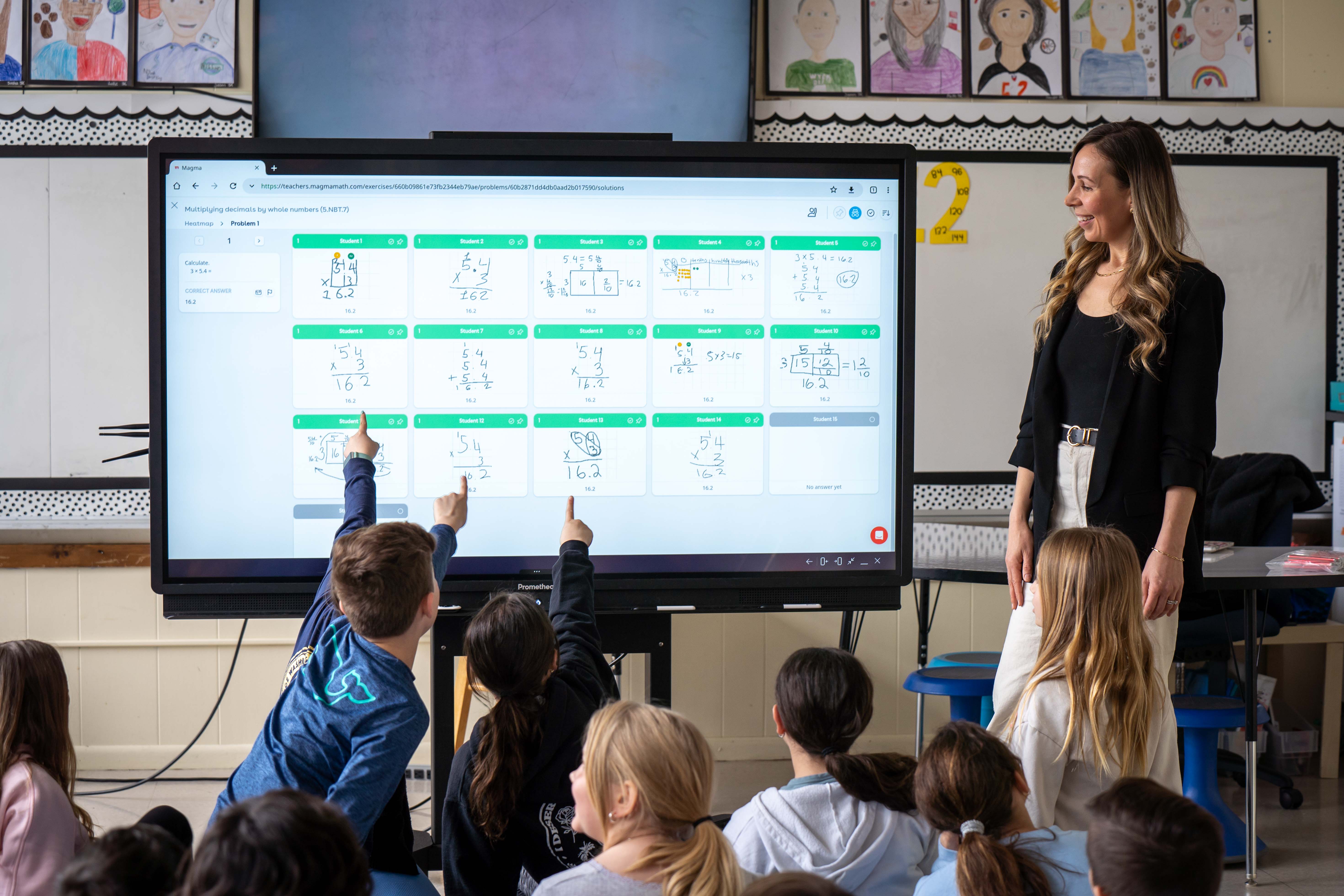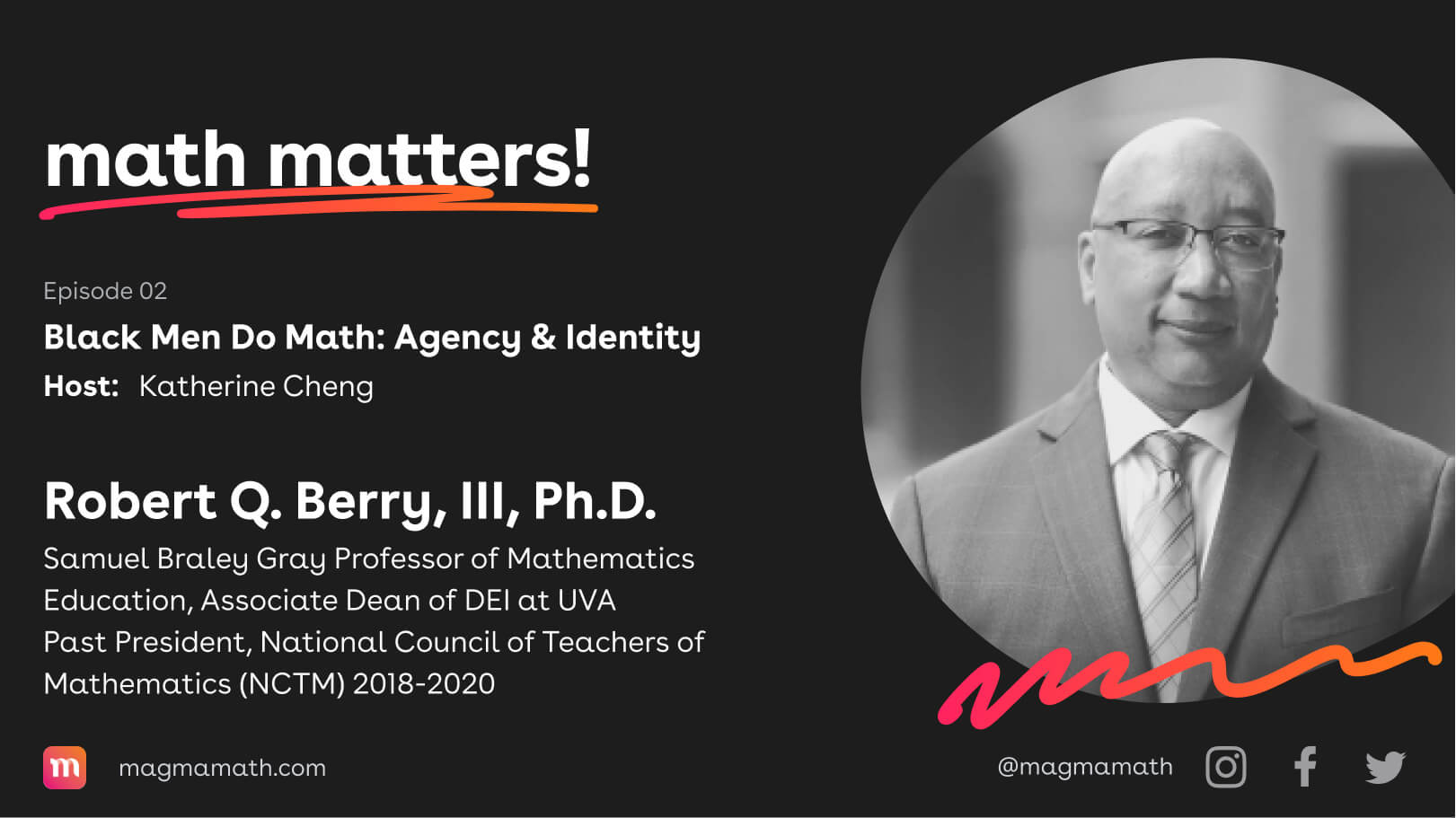As we mentioned before, to take part in the complex process of teaching and learning, we always look at research and data to guide us. Because it is widely encouraged to talk about math in classrooms, we especially look at the research about math discourse. While building Magma Math, we think about features that can promote math talk in the class, allowing students to become agents of their own learning, and providing equal opportunities for all students to participate in math discourse.
A study was conducted to investigate how teachers can create a culture of inquiry in math class. After presenting the students with a problem, the teacher used to orchestrate the discussions by scaffolding and presenting ideas that can help the students participate in the discussion. As time went by, the teacher found that the students did not need the scaffolding as much and that they were participating and engaging on their own. They started suggesting alternative solutions, answering questions posed by other students, and providing scaffolding strategies to help each other. The students also expressed that this intervention gives them the opportunity to “test their understanding and validate their conjectures through mathematical arguments with peers”.
The process used in this study can be replicated using Magma Math by assigning a question, obtaining students’ handwritten solutions, and presenting and discussing them. Through Magma Math, this process can be easier to direct. Teachers can add a specific solution and project it along with the solutions submitted by the students. Teachers can also anonymize the solutions if students do not yet feel comfortable enough to present their work in front of the class. Moreover, teachers can choose to highlight solutions that show a specific misconception to focus on.
Another article looks at how math classroom discussions can encourage equitable opportunities within classrooms where 50% of the students are English Language Learners (ELLs) and evaluates what features of discussions allow for higher performance for ELLs. Two features were found to allow for the most progress for ELLs and equal benefit for ELLs and non-ELLs.
The first feature is what the study describes as a variety of approaches, which means emphasizing multiple ways to solve problems and presenting ideas using multiple resources. By presenting student solutions to the whole class, teachers can show how multiple strategies can be used to solve a problem. Also, the content in Magma Math can be translated into any language, so ELLs can access the content in both English and their native language.
The second feature is equitable participation, which is when ELLs are allowed different forms of participation, including using hand signals, illustrations, and using simple phrases. While using Magma Math during classroom discussions, students can explain themselves through their handwritten solutions. Our drawing area allows students to express their thoughts using words, numbers, shapes, and illustrations. Moreover, students can “raise their hands” in Magma Math by entering the built-in help queue if they want assistance or if they want to contribute to the discussion.
Since it is our mission to help students access math, we are always thinking about the features that can make Magma Math a tool that allows for equitable learning. Have you tried carrying out a classroom discussion using Magma Math? How has your experience been? Do not hesitate to share your thoughts and feedback with us.
Do you want to know more about how Magma Math can take your math classroom to the next level? Contact us!





.jpg)



